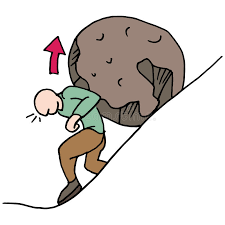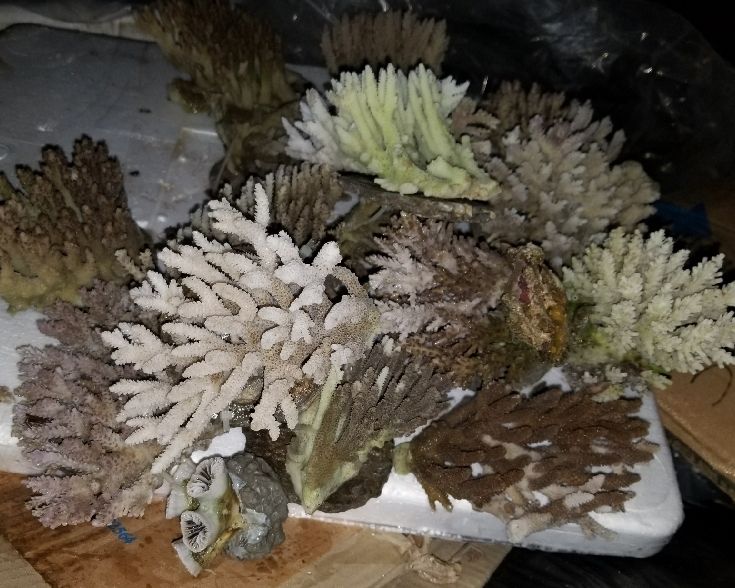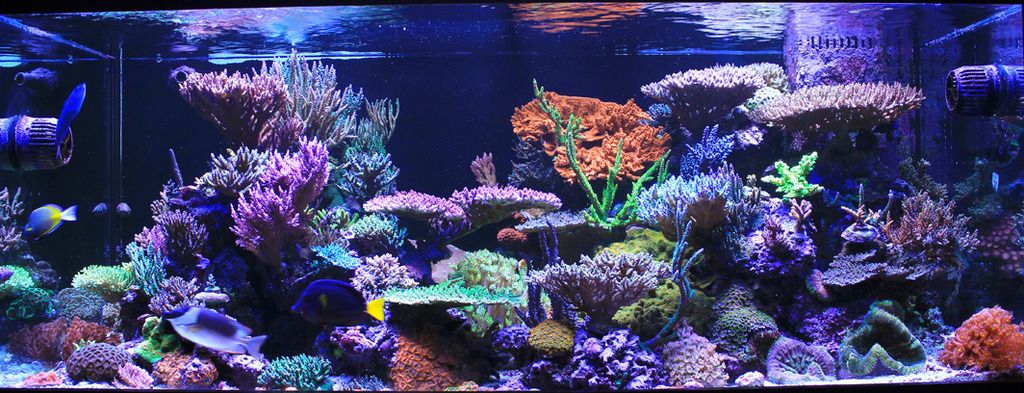It’s a pretty easy thing to do. Pick up some good looking maricultures, these days the line between consumer, retailer and wholesale's a little fuzzy anyway, so just about anyone can get their hands on a box of Indo's, or maybe a few wild Aussies. Cut them up into nice extra chunky frags, mount them on plugs and sell away. In fact it’s probably the easiest way to make actual money in this business by a giant margin. And with color hungry hobbyist, hemorrhaging at will, their hard earned income on corals they'll never see, the market is ripe with shoddiness. You see with wild sps, vendors have at their fingertips, a replenish-able product, that when fragged up, can be upwards of 500-1000% profit in some cases. It's fast, it’s easy and takes very little effort on the part of the vendor. I totally get it. Business is business, buy and sell buy and sell! And for the love of all things exploitable, Always Be Closing!
SELL SELL SELL!!

Because, believe it or not my friends, aquaculture is tough. And by tough I mean excruciating. And I promise you I am not complaining, believe me, this is the path I have willingly chosen to walk, but the coral farmer is very much at the mercy of slow growth rates, extremely limited availability and long term coral health, while in constant state of stress and abuse from handling and fragging and such. The task to provide a continuous and thriving specimen becomes tremendously more arduous and strained. The trade off, barley warranted for the vendor, benefits the customer to an exorbitant extent with a superior product in both health and vitality.

With aqualtured sps, Gone are the brown, ugly and ill adaptive frags that greet you after a typical purchase of wild cuts. Certainly, frags are under an amount of stress in transit and can look a little weary after the trip, but anyone who blames a total color metamorphosis on shipping is flat out lying to you. That piece was bagged up looking just like the ugly nugget you received. However, if you've gone ahead and bought some wild piece's knowingly or not, and you're lucky enough to receive healthy looking pieces, the real struggle has just begun. You can expect most of that wild color to wane and eventually fade to brown. At this point it's anyone's guess as to whether you'll ever see that color you were initially drawn to, and probably based your entire purchase on. Sometimes it does, a lot of times it doesn't. And, if you continue to beat the odds enough to get to the next stage of this gauntlet, before you ever see any actual growth, your now dormant frags will not likely continue any upward growth, as they had before they were plucked from the reef or lagoon.
The best you can hope for at this point, is that once your wild frags have truly acclimated to captivity enough to lay out a decent base, that eventually you'll see some new growth sprout out of this base. The actual original frag will probably never grow again. The new captive growth may resemble the original coloration to an extent, or may look completely different. For better or for worse. There is nothing certain at all that you'll be as enamored as you were with the venders pic that lured you in. In fact, it's best to keep your expectations as low as possible at this point, and maybe you'll be surprised. And I'm not even going to mention pests yet. Will save that one for another write up another day.

Anyway, this marathon of a process is how 85% of my collection was built. Nursing wild colonies, or the surviving frags off those colonies that inevitably crashed, and housing them for up to a year or two before even considering to sell them. It's a very drawn out method for investment returns, but as a farmer/collector, this is by far the most ideal means for me to operate in my opinion, providing the opportunity to supply a product far removed from its wild origins, and in turn far more likely to survive.
Captive grown sps is worlds more resilient, and will stand up to the rigors of shipping and subsequent acclimation and transition better. Colors generally don't pull disappearing acts, but if they do wane at all, are far more likely to return faster, especially once the frag is acclimated fully. Ultimately, the majority of the crap that makes buying wild sps so disappointing, is essentially gone when you go with aquacultured coral. So, why not make the vendor put some elbow grease into it, and earn that money of yours.

3 Comments:
Jade says:
Why isn’t there money in beautiful things? Growth can only be maintained at a higher and higher cost, ie the world is finite. Nice write up; made me think about: https://www.youtube.com/watch?v=EEZkQv25uE
EA Norris says:
Thank you for sharing this information
Lucy says:
Adam,
Thank you for posting these entries. It’s clear how much attention to detail, time and thought you’ve invested into sustainability. I deeply appreciate you sharing your inner monologue as submerged hands hover in and out of shallow water in the background 24/7. To much of it, my observations in coral aquaculture are mutually shared with on-going learning quirks. No joke, actually caring about the welfare and quality of life of these little animals is intense yet gratifying. It really makes you forget about the labor intensive routine. :)